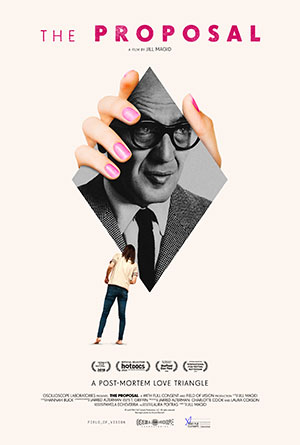Conceptual artist Jill Magid’s compelling and contemplative film The Proposal, which opens at New York’s IFC Center on Friday, May 24, is an atypical architecture documentary. Magid gives viewers glimpses of Luis Barragán, Mexico’s most important architect, at work, in the world, at leisure. We learn about his life from friends and relatives. We spend time with some of his colorful buildings, like Cuadra San Cristóbal (1968) in Atizapán and the Satellite Towers (1958) in Mexico City. Barragán haunts every frame, but this is more a document of Magid grappling with his legacy and who controls it rather than tracking the sweep of his career.
After the Pritzker-winning “poet among architects” died in 1988, his personal and professional archives were split. The former is at the Luis Barragán House and Studio, a UNESCO World Heritage Site, in Tacubaya. The latter, however, was purchased in 1995 for $2.5 million by Rolf Fehlbaum, chairman of the Swiss furniture company Vitra, in lieu of an engagement ring for his now-wife, Federica Zanco. Since then, it has been housed below Vitra’s headquarters in Birsfelden. Zanco promised that within two years the archive would be publicly available. Nearly 25 years later, it’s still nearly totally inaccessible.

More troubling: Vitra also owns the intellectual property rights to all of Barragán’s work, controlling visual representations of his buildings even though it doesn’t own any, even trademarking “Barragan” without the accent. This has had a chilling effect on most accounts that engage with Barragán’s life and career. In 2007, for instance, a documentary about Barragán shut down after filmmaker Heinz Emigholz was hit with a fee of 30,000 Euro for picture rights. At the time, he called it “active censorship perpetrated through capitalism.”
Magid herself is softly threatened. The Proposal is loosely structured around her three-year correspondence with Zanco, as she tries gaining access to the Barragán archives. In one exchange, Magid offers Zanco the opportunity to curate objects in an upcoming gallery show about Barragán; Zanco politely declines, then implies Magid could run afoul of IP laws.
The director rejects such censorship. Magid spends days living in and filming Barragán’s home, allowing her camera to linger meditatively in gorgeously lit rooms and quiet gardens and on elements of everyday domesticity, like bookshelves, paintings, and record collections. She gets so close to the warm red walls at Cuadra San Cristóbal that it’s difficult to tell if we’re looking at a building or the textured hide of some exotic animal. For the gallery show, she cuts up and adapts books, photos, and other objects, almost daring a challenge to her artistic right to creatively transform copyrighted material.
The greatest provocation, however, is a diamond ring. With the consent of Barragán’s family, Magid secured a sample of his cremated remains, had it made into a lab-grown diamond, and offers it as a gift to Zanco. Magid reasons that it was one proposal that led Zanco to obtain the archive, so she offers another: the archive’s return to Mexico for a piece of Barragán himself.
A Mexican newscaster called Magid’s proposal a “sinister barter,” but The Proposal argues that the more perverse bargain is a society’s acceptance of a corporation’s control of an artist’s legacy. When the archive of an architect as important as Luis Barragán is held back from the public, it becomes impossible to discover, understand, grapple with, challenge, and build on his work and ideas. And there are dire implications for culture broadly when we accept as normal the wealthy locking away art and heritage like a private fetish object.
The Proposal might be the only kind of film about Barragán that can be made right now, given Vitra’s IP control. But out of its limitations Magid crafts a documentary of rare urgency and implications wider than the built environment.
Trailer courtesy The Proposal





